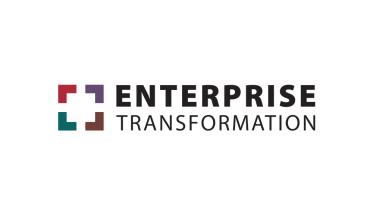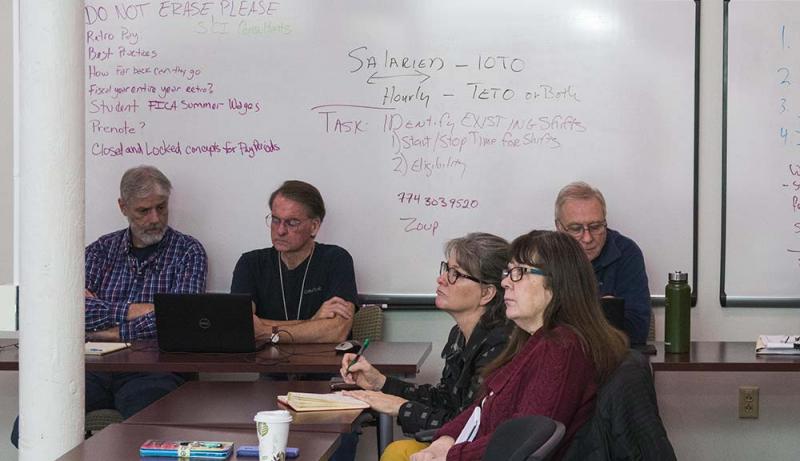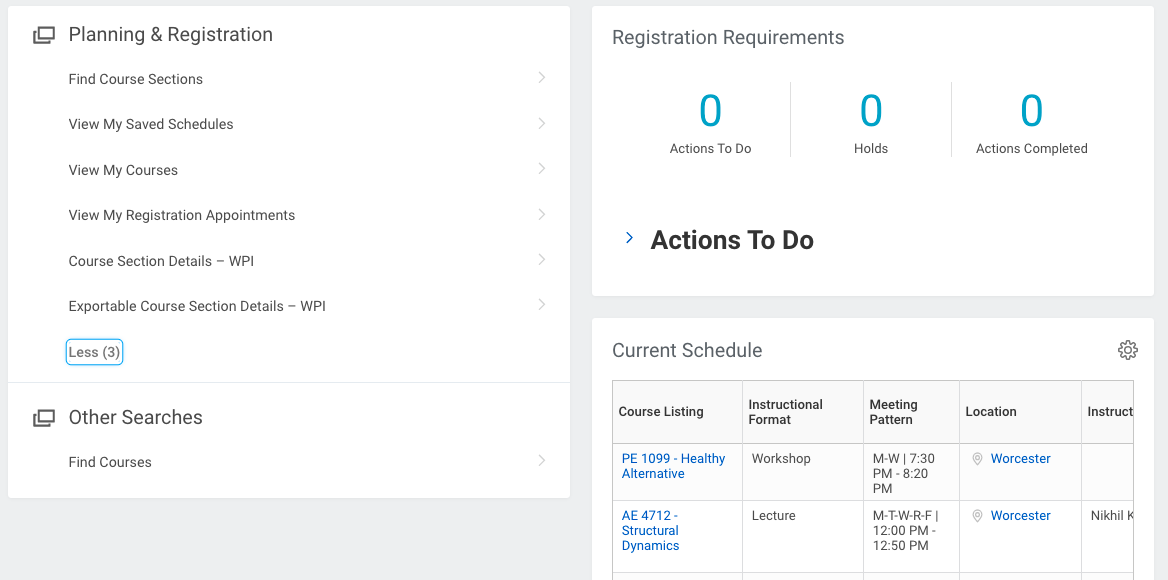
Enterprise Transformation Automates Processes and Elevates WPI (Part 4 of 4)
Offices and Departments
Enterprise Transformation
Enterprise Transformation is WPI's significant update of the existing technology infrastructure on campus. Once implemented, the project will dramatically improve processes and procedures across the university.
This initiative will roll out over the next four years and touch every person on campus. Enterprise Transformation will improve the user experience for faculty, staff, and students while also providing the university with the cutting-edge security standards necessary at such a competitive, research-focused institution.
Fourth Phase: eProjects
- Challenge: Tracking and maintaining all aspects of WPI projects
- Solution: Using one central source for students, faculty, sponsors, and partners to access relevant information
Enterprise Transformation, WPI’s major technology infrastructure update, is on track to provide improvements for employees, students, and their families. One of the most significant ways is the introduction of a centralized and comprehensive tracking, storing, and sorting for electronic projects or eProjects. A web presence for Enterprise Transformation offers additional information and updates about the project.
The university is already making things as easy as possible for students who are working on the projects that are the foundation of a WPI education.
The complete overhaul of the eProjects system changes nearly every aspect of how a student requests, chooses, is matched with, and records final project materials for anything from an IQP to a Great Problems Seminar. The process is also streamlined for faculty and administration so they can assess student eligibility for certain projects, find availability for project centers, or learn about sponsors.
As WPI’s global projects program has grown and as technology becomes more advanced, it has been increasingly difficult to accurately and effectively track and record projects and all the assorted details that go with them, says Bob Brown, director of web app development and director of the eProject arm of Enterprise Transformation.
“There are lots of pieces in these projects,” Brown says. “And all projects are different.” Students looking for IQP information, for instance, are generally looking for a place to go, while MQP students are seeking precise project themes. Grad students are looking for a specific faculty member to work with. The new eProject model allows all that to happen in one place, making the information easier to find for both current and historic purposes.

Employees prepare for the coming changes with Enterprise Transformation training sessions.
With WPI’s emphasis on the importance of project-based work, Brown says, having a comprehensive and easy-to-use eProjects system is imperative. “This goes from initial project proposal to the point where the project is electronically archived. We will have meta-data tagging to make it easy to find according to topic, location, student, faculty, organization, or time. It is cradle-to-grave.” Even once the projects are over, the project information needs to remain available. As the Center for Project-Based Learning grows and expands, WPI can share project examples with stakeholders or potential partners.
The current system is a hodgepodge of individual and disparate fixes by people who needed something better, says Brown. “That might have fixed the tip of the iceberg,” he says, “but then you still had the iceberg. From a faculty point of view, these changes will make it easier to vet students for projects.”
As tech-savvy students develop increasingly complex work, they have had problems submitting the results. “Right now there is limited or no support for the computing styles students use when submitting projects,” Brown says. Twenty years ago, storing an eProject meant simple files, maybe a few power points or photos. Today, students often attach complex media like video games or movies as part of their eProjects. Smaller, but crucial, administrative elements of eProjects will also be revamped. For instance, students have applied to projects and been accepted, but then they failed to register causing problems with grading and graduation requirements. With the new system, the application, acceptance, and registering process is combined, so such an important piece of the process doesn’t slip through the cracks.
Students have a huge stake in projects, and these changes will give them a central place where they can see something as basic as all the available IQPs or MQPs—something that previously would have taken significant input from offices and people across campus. In addition, a lot of behind-the-scenes project resources need organization and documentation. Professors need to make sure students have taken necessary prerequisite courses within a certain time frame, and this system will allow them to see that information from a dashboard instead of going to many campus resources to collect the data.
“I don’t see this as developing software,” says Brown. “This is helping our students become the next generation of engineers, scientists, and scholars. That’s success.”
- By Julia Quinn-Szcesuil
What is Enterprise Transformation?
Editor's note: This is the fourth of a four-part series to help employees understand the four main projects associated with Enterprise Transformation, WPI’s organization-wide implementation of new computer systems.




